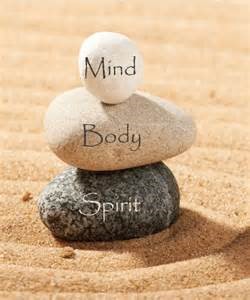
When you hear about “toxins” you likely think of wildfire smoke, oil spills and other high profile events, such as the lead crisis in Flint, Michigan’s municipal water. Those are obvious and highly publicized, but the hard reality is that you are likely exposed to thousands of toxins every single day without giving it a second thought.
A toxin is any substance that can poison your body, negatively impacting your health. Exposure to environmental toxins can damage your endocrine, immune, and nervous systems, and your digestive tract. They are a significant concern because they can contribute to chronic diseases by disrupting the body at a cellular level, wreaking havoc by creating ongoing and runaway inflammation and oxidative stress (free radicals causing damage at the cellular level).
ACUTE VS CHRONIC TOXIN EXPOSURE
Unlike acute toxicity, such as the smoke from wildfires, chronic exposure to environmental toxins is when you have low-dose exposure over a long period of time, which allows the toxins to gradually build up in your body.
Going through a regular day, you encounter a constant stream of toxins, from chemical-laden food, paint, pizza boxes, household cleaners, thermal receipts, plastic bottles, cosmetics, the air you breathe, the water you drink, the dust in your home and even through prescription drugs.
Chronic exposure often presents with subtle, often misdiagnosed health disorders, such as chronic fatigue, thyroid disorders, gut symptoms, hormonal imbalances, metabolic and weight issues, skin ailments and psychiatric problems. Symptoms typically build slowly over time, and as time goes on you can accumulate symptoms that affect different parts of the body. Sometimes there is a “last straw” event, making your symptoms much worse and sending you to the doctor.
In fact, it might feel like there’s an avalanche brewing in your body that no one can seem to figure out.
Here are some of the more often reported symptoms:
- Muscle cramps, tics, twitches
- Numbness
- Tingling or tremors
- Chronic sinus problems
- Eye irritation/tearing
- Brain fog, difficulty finding words
- Memory loss, impaired language skills, and confusion
- Depression/anxiety
- Mood swings
- Shortness of breath, wheezing, coughing
- Headaches or Migraines
- Metallic taste in the mouth
- Weakness
- Fatigue
- Joint pain or whole-body aches
- Skin rashes
- Constipation, diarrhea, abdominal pain
- Loss of coordination
- Dizziness
- Night sweats
- Unexplained weight loss or gain
- Insomnia
- Low body temperature
- Infertility and miscarriage
The easiest way to think about toxins is to put them in broad categories. Here are the main categories of toxins:
Environmental Toxins
Each year more than 4 billion pounds of chemical compounds are released into the environment. Examples include the pesticides, herbicides, fungicides used in agriculture and landscaping, chemicals found in cosmetics, fragrances, personal care and cleaning products, home building materials, mattresses, furniture and even clothing. This would also include industrial toxins, such as toxic emissions of methane, carbon dioxide, volatile organic compounds, benzene, toluene and sulfur. And the scary thing is many of the toxic ingredients are either lawful or hidden in “proprietary formulations” where the toxins evade identification.
Some of the biggest offenders that we see in toxin testing? Glyphosate, the pesticide known as Round-Up; atrazine, an herbicide sprayed on 80% of corn crops in the United States; plastics (all, not just BPA); and all varieties of parabens found in cosmetics and personal care products. A toxin soup, indeed.
Heavy Metals
Heavy metals are elements that are found in the earth. They’re used in agriculture, medicine and in industry. The most common elevated heavy metals are mercury, lead, cadmium and arsenic. There are others that we are seeing more and more often in the toxin screenings we offer at Blum Center for Health, including Barium, Gadolinium, Uranium and Nickel.
These metals can enter your body through various sources, including contaminated food and water, industrial exposure, food container linings and even pharmaceuticals and cosmetics. Mercury is found in big fish, including tuna, as well as dental fillings and lead pipes. Arsenic is found in water, chocolate, rice and pesticides, while cadmium is found in cigarette smoke, batteries, chocolate and contaminated food.
Mycotoxins
Mycotoxins are toxic substances produced naturally by molds and fungi as a result of environmental conditions. You’ve likely heard of black mold found in damp and water-damaged buildings and the health havoc it can create. But, did you know that about 25 percent of crops are affected by mold and fungal contamination, making mycotoxins some of the most common natural contaminants in both human and animal food. Poor harvesting methods, improper storage, and suboptimal conditions during processing and transportation can also promote their growth.
The most commonly contaminated foods are also some of the most regularly used foods, unfortunately:
- Grains, and all products made from grains, such as oatmeal, bread, crackers and cereals
- Cocoa/chocolate
- Coffee
- Fruit juices
- Milk and dairy products
- Vegetable oils
- Ethanol and Beer
- Dried fruits, nuts, and spices
Although the human body has an innate capacity to detoxify itself, people now are exposed to a level of consumer, agricultural, and industrial toxins that we are no longer able to handle.
Toxins do all sorts of damage: they gradually clog the liver, block insulin-receptor sites, damage the genes, and undermine DNA repair and recovery. As noted earlier, they contribute to inflammation, blood-sugar problems, digestive problems, mitochondrial disorders, low energy, immune and a host of other problems. When toxins build up over time and overload your body, they gradually undermine your health and cause disease.
The good news is … this is not only preventable, it’s reversible.
Ready to reduce your toxin load and feel more vital and energetic?
Join the 3-Day Toxin Reset where you will learn:
Day 1: What are toxins and how they are connected to your health
Day 2: Where in your past and in your daily life are toxins found
Day 3: What you can do about it using food as medicine, supplementation and minimizing exposure









 By Mary Gocke, RDN, CDN
By Mary Gocke, RDN, CDN